I like to observe structures, mostly if they are not material. Structures are there to define special spaces, to provide functions, to hold existence. Especially Yoga cikitsa
This time I bring you the structure of yoga cikitsa (from the sanskrit yoga therapy), the first series of Ashtanga Vinyasa Yoga; for me this is made as poetry, I’ll tell you why in this post.
Yoga cikitsa is made by a five-part structure:
1. the beginning with suryanamaskara A
2. the warming/strenghtening with suryanamaskara B
3. the standing poses
4. the sitting poses
5. the inversions and closing postures
In hatha yoga everything is practiced by the left and the right side, so as happens with the asanas in ashtanga vinyasa yoga, but when it comes to the sun salutations there are only 5 repetitions starting with the right side, why? I asked myself.
If we consider 3 as a male number and 2 as a female one, while we do 5 sun salutations we’re satisfying male and female integrated. Number five also represents the development in nature, that quality of reproducing itself. Of course we can see the pentagon mandalas in a slice of an apple, in the seeds of a sunflower, or in the five fingers of a beautiful hand.
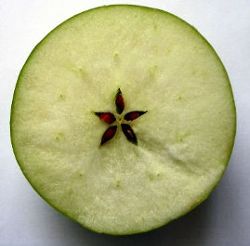
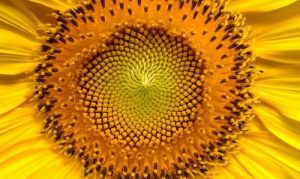
But five is also expressed in the five pointed star that remains in many flags of different cultures, showing its importance. The pentagon or the five pointed star shows a way to grow that is different than just expanding volume, they show a way to grow as a expansion from inwards to the outside, as an espiral. In this system there’s also an equilibrium between the parts and the structure, which is expressed as the gold proportion or Phi.
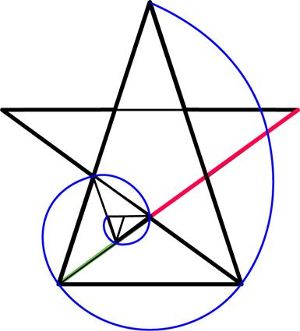
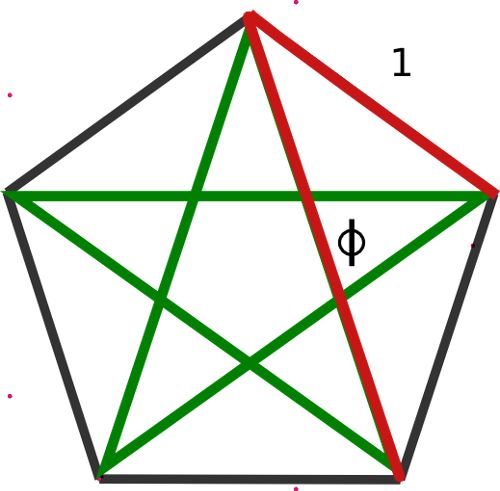
So I like to think that when we’re doing this sequence, we’re honoring a way of order that can give enough «space» to the «one thing» and the «whole thing», in other words, a kind of order that relates the smallest, the biggest and the whole structure by the same law.
Besides the number’s background in this, 7 ásanas for the first sun salutations, 17 for the second one, 12 standing asanas that opens the articulations, 21 sitting postures that prepare you to go inside and 13 closing postures that bring you upside down, this sequence is an excellent preparation for finally sitting and contemplate the existence, the reality, after all the previous exploration. Asanas are there for that, to build a path to contemplation, to connect with a way of feeling that doesn’t depends on time, space or people around, we’re all affected by the same law (of love).
Take a look to the asanas, at the end I give you my briefly interpretation of what each part is preparing us to.
1. Samasthitih
2. Uttanasana
3. Chaturanga dandasana
4. Urdhva mukha svanásana
5. Adhomukha svanásana
6. Uttanásana
7. Samasthitih
The beginning, meant to bring connection, to feel balance or «perfection».
1. Samasthitih
2. Utkatasana
3. Uttanasána
4. Chaturanga dandásana
5. Urdhvamukha svanásana
6. Adhomukhasvanásana
7. Virabhadrásana
8. Chaturanga dandásana
9. Urdhvamukha svanásana
10. Adhomukha svanásana
11. Virabhadrásana
12. Chaturanga dandasana
13. Urdhva mukha svanásana
14. Adhomukha svanásana
15. Uttanasana
16. Utkatasana
17. Samasthitih
Transcending the above, like in the octave of music.
1. Padangustásana
2. Padahastásana
3. Utthita trikonásana
4. Parivritta trikonásana
5. Utthita parsvakonásana
6. Parivritta parsvakonásana
7. Prasarita paddotanásana
8. Parsvottanásana
9. Utthita hasta padangusthasana
10. Ardha badha padmottanásana
11. Utkatásana
12. Virabhadrásana I y II
To expand yourself, open your joints, articulate. Don’t stay rigid so you cannot experiment the unknown.
1. Dandásana
2. Paschimottanásana
3. Purvottanásana
4. Ardha badha padma paschimottanásana
5. Triang mukha eka pada paschimottanásana
6. Janusirsásana A, B, C
7. Marichiásana abcd
8. Navásana
9. Bhuja pindásana
10. Kurmásana
11. Suptakurmásana
12. Garbha pindásana
13. Kukkutásana
14. Badha konásana abcd
15. Upavishta konásana ab
16. Supta konásana
17. Supta padangusthásana
18. Ubhaya padangustásana
19. Urdhva mukha paschimottanásana
I feel this is meant to go inside, but also is a process of liberation that has a small closure with the next two asanas
20. Setu bhandásana
21. Urdhva danurásana
This liberation comes from the pelvis and the heart, our most repressed cores, but also places to communicate deeply, with the multiverse.
May be here is more clear this image.
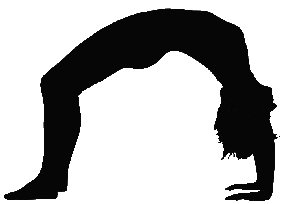
1. Salambha sarvangásana
2. Halásana
3. Karnapidásana
4. Urdhva padmásana
5. Pindasana
6. Matsyasana
7. Uttana padásana
8. Sirsásana
9. Badha padmásana
10. Yoga mudra
11. Padmásana
12. Utpluthi
13. Savasana
After you liberate, you can see reality in other ways, you can turn you upside down and observe a different picture. All this just to remind that we are in the structure and we can experiment different ways to approach reality.
Hope you like it this post of yoga cikitsa, I’m always open to receive comments.
If you want to know more about five in geometry and myth, don’t forget to read Cesar Gonzalez Ochoa, is a shame that his book is not available nowadays.
 Pastel de frutos - mediano
Pastel de frutos - mediano
 Pan de caja
Pan de caja
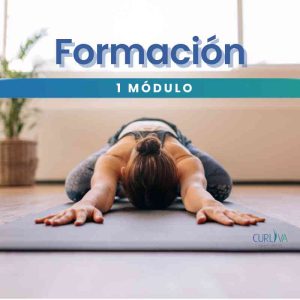 Curso de formación
$ 999.00
Curso de formación
$ 999.00
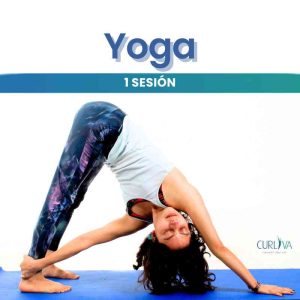 Clase de yoga Presencial (1x)
$ 200.00
Clase de yoga Presencial (1x)
$ 200.00
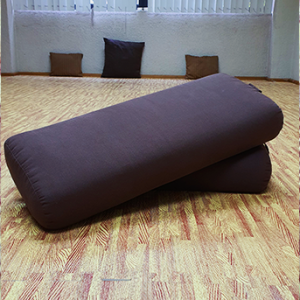 Bolster para Yoga
$ 600.00
Bolster para Yoga
$ 600.00

Te estas preguntando qué beneficios tiene la práctica de yoga durante el embarazo, qué posturas…
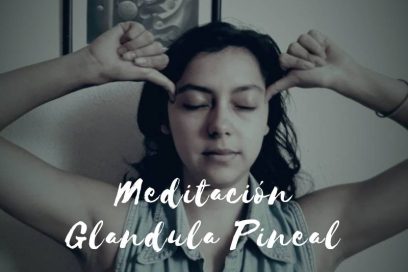
La glándula pineal es la encargada de producir melatonina, una hormona derivada de la melatonina…
Me gustaria algún día probar esta secuencia de manera práctica 🙂 Te felicito por tu interés y tu pasión en el tema DiANA
¡Gracias José! ¡Podemos probarla juntos próximamente!
Me encanta conocer la mayoría de esas posturas gracias a ti.
Y ahora no sólo los nombres y el acomodo del cuerpo, sino el sentido de la secuencia del 5 en el saludo al sol. De las aperturas y los cierres. De la inversión de la postura para poder mirar la imagen desde una perspectiva distinta.
Tal vez es así como ocurre en el psicoanálisis, poder mover nuestra propia postura, abrirnos y mirar la imagen desde un lugar distinto. Eso tiene como efecto el movimiento, el cambio, el devenir y advenir… la trascendencia.
Linda Lili siempre tejiendo puentes con el psicoanálisis; perdernos para encontrarnos de otra forma. Un abrazo.
Muy interesante Diana….
Sabes muchísimo del tema
Además que eres un gran ser humano y excelente maestra 😉
Mucho éxito en todo!